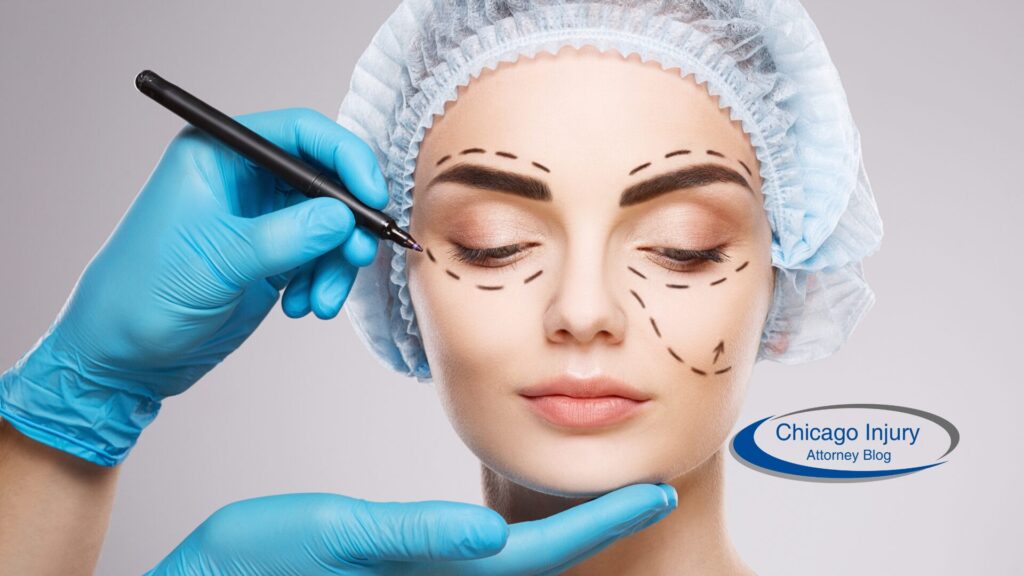Cosmetic surgery has become increasingly popular in recent years. However, along with its rise in demand comes a concerning trend: the increase in medical malpractice cases. Patients are facing a range of risks when seeking cosmetic enhancements, from botched procedures to unlicensed practitioners.
In this article, we will delve into the common types of medical malpractice in cosmetic surgery, the impact on patients, the legal aspects involved, and, most importantly, how to prevent such incidents from occurring.
Stay tuned to learn more about this growing issue and how it can be addressed effectively.
Key Takeaways:
Medical malpractice in cosmetic surgery is on the rise and can have severe physical, emotional, and financial consequences on patients. Common types of medical malpractice in cosmetic surgery include botched procedures, unlicensed practitioners, and improper patient screening. To prevent medical malpractice, patients should research their surgeon and facility, understand risks and complications, communicate openly with their medical team, and seek second opinions.
The Rise of Medical Malpractice in Cosmetic Surgery
The rise of medical malpractice in cosmetic surgery has become a concerning issue in the healthcare industry, impacting patients and practitioners alike. As the demand for cosmetic procedures continues to grow, so do the instances of malpractice and negligence in surgical practices.
One of the contributing factors to this rise is the lack of stringent regulations and enforcement mechanisms governing cosmetic surgery. Without proper oversight, there is a higher risk of substandard practices and unethical behaviour among some providers. Accreditation boards and regulatory bodies play a crucial role in setting standards and holding practitioners accountable for their actions. Gaps in monitoring and enforcement can lead to loopholes that allow malpractice to persist.
Understanding the Scope of the Issue
To understand the scope of the issue of medical malpractice in cosmetic surgery, it is crucial to delve into the statistics, trends, and impact on patients and the healthcare system. By examining the prevalence of malpractice cases and identifying the areas of concern, stakeholders can work towards implementing effective solutions and preventive measures.
Statistics reveal that malpractice in cosmetic surgery is a serious concern, with a significant number of cases occurring worldwide each year. According to a recent study by the American Society of Plastic Surgeons, approximately 20% of all medical malpractice claims are related to plastic surgery procedures. These cases range from surgical errors to complications arising from inadequate post-operative care.
Case studies highlight the devastating effects of malpractice on patients, both physically and emotionally. In many instances, individuals undergo cosmetic procedures with high hopes of improving their appearance, only to suffer irreparable damages due to negligence or incompetence.
Factors Contributing to the Increase in Malpractice Cases
Several factors contribute to the increase in medical malpractice cases within the field of cosmetic surgery. These include issues related to practitioner training, patient safety standards, regulatory oversight, and the ethical conduct of healthcare providers.
In terms of practitioner training, the level of experience and expertise a surgeon possesses plays a crucial role in reducing the chances of malpractice. Seasoned cosmetic surgeons are often better equipped to handle complex procedures and potential complications, resulting in fewer errors. Patient safety standards, such as thorough pre-operative assessments and clear communication about risks, are essential to minimize the risk of malpractice claims. Stringent regulatory oversight and adherence to industry guidelines help maintain the integrity of cosmetic surgery practices and protect patients from substandard care.
Common Types of Medical Malpractice in Cosmetic Surgery
Common types of medical malpractice in cosmetic surgery encompass a range of issues, from botched procedures and unlicensed practitioners to improper patient screening and post-operative care deficiencies. These instances of negligence can have severe consequences for patients and may lead to long-term physical and emotional trauma.
One of the most alarming types of malpractice is when a surgeon fails to obtain informed consent from the patient, detailing risks and potential outcomes before the procedure. This lack of transparency can result in legal ramifications for the physician and cause harm to the patient.
Inadequate follow-up care after a cosmetic surgery procedure can lead to complications and patient dissatisfaction. It is imperative for clinicians to provide thorough post-operative instructions and monitor the patient’s progress to ensure proper healing and address any issues promptly.
Botched Procedures
One of the most prevalent forms of malpractice in cosmetic surgery is botched procedures, where surgical errors or complications lead to unsatisfactory outcomes for patients. These instances often result from practitioner negligence, lack of proper training, or deviation from established medical standards.
The consequences of such botched procedures are far-reaching, impacting not only the physical appearance but also the mental and emotional well-being of patients.
Patients
- may suffer from infections, scarring, disfigurement, or even life-threatening complications.
- Along with the physical harm, there are significant financial burdens and emotional distress that patients have to endure.
To prevent such incidents, it is crucial for patients to thoroughly research their surgeons, ensure proper credentials, and have open communication about expectations and risks.
Unlicensed Practitioners
The presence of unlicensed practitioners in the field of cosmetic surgery poses a significant risk to patient safety and outcomes.
These individuals, operating without the required credentials, may perform procedures without the essential knowledge or experience, increasing the likelihood of surgical errors and complications. Regulatory bodies play a crucial role in overseeing licensed practitioners; however, unlicensed individuals circumvent these regulations, making it challenging to ensure patient protection.
- Patients seeking cosmetic enhancements may unknowingly put themselves at risk by choosing unlicensed practitioners, jeopardizing their own well-being and potentially facing legal repercussions due to malpractice.
Improper Patient Screening
Improper patient screening practices in cosmetic surgery can result in surgical procedures being performed on individuals who are not suitable candidates, increasing the risk of complications, dissatisfaction, and potential legal issues. Thorough and comprehensive patient evaluations are essential to mitigating malpractice risks.
During patient screening, key assessment criteria such as medical history, current health status, psychological evaluation, and realistic expectations need to be carefully considered. Risk factors, including underlying health conditions, allergies, smoking habits, and previous surgeries, play a crucial role in determining a patient’s candidacy for cosmetic procedures. Ensuring compliance with regulatory standards, ethical guidelines, and informed consent procedures is paramount to safeguarding patient well-being and maintaining professional integrity in the cosmetic surgery field.
Impact of Medical Malpractice on Patients
The impact of medical malpractice on patients undergoing cosmetic procedures extends beyond physical consequences to encompass emotional and psychological effects, as well as financial burdens. These repercussions can have lasting implications on the well-being and quality of life of affected individuals.
Emotionally, patients may experience a range of negative feelings, such as anxiety, depression, and a loss of confidence in both themselves and the medical profession. The psychological trauma resulting from malpractice incidents can lead to a prolonged recovery period and even post-traumatic stress disorder, significantly impacting the mental health of individuals.
Financially, the costs associated with corrective surgeries, additional treatments, and loss of income due to extended recovery can place a heavy strain on patients and their families. In severe cases, patients may face bankruptcy or financial instability, adding another layer of stress to an already challenging situation.
Physical Consequences
The physical consequences of medical malpractice in cosmetic surgery can range from surgical complications and infections to disfigurement and permanent damage. Patients who experience such outcomes often require additional corrective procedures and ongoing medical care.
Common complications of cosmetic surgery malpractice include asymmetry, nerve damage, scarring, and hematoma formation. These issues can lead to psychological distress and long-term physical discomfort for the patient. Treatment approaches may vary depending on the specific complication, ranging from non-invasive therapies to revision surgeries.
It is essential for patients to be aware of their rights in such situations. Patient rights include the right to seek compensation for damages, the right to access medical records, and the right to file complaints with regulatory bodies.
Emotional and Psychological Effects
Beyond the physical harm, medical malpractice in cosmetic surgery can lead to profound emotional and psychological effects on patients, including feelings of distress, anxiety, and low self-esteem. These emotional wounds may require therapeutic intervention and support to aid in the healing process.
The mental health considerations post-malpractice are crucial, as patients might experience a range of complex emotions like betrayal, anger, and even depression. Coping strategies such as seeking counselling,, joining support groups, or practicing mindfulness can help individuals navigate these challenges. Healthcare providers must offer holistic care that addresses not just the physical repercussions but also the mental well-being of the patients, ensuring a comprehensive recovery journey.
Financial Burdens
Medical malpractice in cosmetic surgery can impose significant financial burdens on patients, as they may incur additional expenses for corrective treatments, rehabilitation, and legal proceedings. The financial implications of malpractice can exacerbate the emotional stress and recovery process for affected individuals.
After a cosmetic surgery gone wrong, patients often find themselves facing unexpected medical costs for follow-up procedures, hospital stays, and medication. The need for ongoing therapy or counseling to address the trauma can add to the financial strain. Legal fees associated with pursuing compensation claims can further burden patients already grappling with the aftermath of malpractice. The uncertainty of the outcome of legal battles and the time-consuming nature of court proceedings complicate the financial uncertainties patients face after being impacted by malpractice.
Legal Aspects of Medical Malpractice in Cosmetic Surgery
Navigating the legal landscape of medical malpractice in cosmetic surgery involves understanding patients’ rights, the statute of limitations, and the importance of legal representation in pursuing claims against negligent practitioners. Legal recourse is a crucial aspect of seeking justice and compensation for malpractice-related damages.
When a patient feels they have experienced malpractice in cosmetic surgery, they must be cognizant of the steps involved in pursuing legal action. The litigation process typically begins with filing a complaint against the responsible party, often with the assistance of a skilled attorney specialized in medical malpractice cases. These legal experts play a pivotal role in evaluating the validity of the claim, gathering evidence, and guiding the plaintiff through each stage of the legal proceedings.
Patients are safeguarded by certain patient protection laws that impose regulations on the cosmetic surgery industry to ensure the safety and well-being of individuals undergoing procedures. These regulations may address issues such as informed consent, standard of care, and transparency in medical records. Understanding these protections is essential for patients seeking to vindicate their rights and hold negligent practitioners accountable.
Patients’ Rights and Legal Recourse
Patients affected by medical malpractice in cosmetic surgery have inherent rights to seek legal recourse and compensation for damages incurred.
These rights are crucial in protecting patients who have experienced negligence or harm during cosmetic procedures. In cases of malpractice, patients may explore various legal avenues, such as filing a lawsuit to hold responsible parties accountable.
Seeking justice through the legal system entails proving the negligence or wrongdoing of the healthcare provider, which can be complex and challenging. In such instances, having skilled legal representation becomes paramount to navigating the complexities of the legal process and seeking fair compensation.
It is also essential for patients to be aware of their rights to medical records access, informed consent, and the right to the proper standard of care, all of which can be significant factors in medical malpractice cases.
Statute of Limitations
The statute of limitations plays a critical role in medical malpractice cases within cosmetic surgery, defining the timeframe within which affected patients can file legal claims against practitioners or healthcare facilities. Understanding the limitations period is crucial for patients seeking legal remedies for malpractice-related harms.
In the context of cosmetic surgery malpractice cases, the statute of limitations serves as a legal safeguard that outlines the maximum duration within which a patient can bring a lawsuit against a negligent surgeon or facility. This timeframe varies depending on the jurisdiction, typically ranging from one to five years.
It is essential for individuals who have suffered from malpractice in cosmetic surgery to be aware of these limitations, as failing to file within the specified period can result in the loss of the right to seek legal recourse.
Exceptions to the statute of limitations may exist in certain circumstances, such as cases where the harm caused by malpractice was not immediately apparent or in situations involving minors.
Importance of Legal Representation
Securing legal representation is paramount for patients navigating medical malpractice claims in cosmetic surgery, as experienced attorneys can provide guidance, advocacy, and support throughout the legal process. Legal experts help protect patients’ rights, build robust cases, and pursue favorable outcomes in malpractice litigation.
Having a skilled legal team in malpractice cases involving cosmetic surgery can significantly impact the trajectory of a case. The expertise of attorneys specializing in medical malpractice ensures that patients are well-equipped to navigate complex legal procedures with confidence.
Through careful examination of medical records, consultation with expert witnesses, and negotiation with insurance companies, legal representatives play a crucial role in advocating for fair compensation and justice. Their understanding of the legal intricacies surrounding cosmetic surgery malpractice enables them to devise effective strategies to strengthen the client’s position.
Preventing Medical Malpractice in Cosmetic Surgery
Preventing medical malpractice in cosmetic surgery requires a proactive approach that involves researching the surgeon and facility, understanding risks and potential complications, fostering open communication with the medical team, and seeking second opinions prior to undergoing procedures. Patient awareness and giving the power toment are key to mitigating malpractice risks.
It is essential for patients to have a thorough understanding of the procedures being considered, including the benefits and potential drawbacks. Empowering patients with comprehensive information allows them to make informed decisions that align with their goals and values. Equally important is establishing clear expectations with the surgeon regarding the outcomes, post-operative care, and follow-up appointments to ensure a smooth recovery process. Creating a collaborative partnership between the patient and the medical team fosters trust and enhances the overall treatment experience.
Researching the Surgeon and Facility
Ahead of undergoing cosmetic procedures, patients should conduct thorough research on the surgeon’s credentials, experience, and track record, as well as the facility’s accreditation, safety protocols, and patient satisfaction ratings. Choosing reputable practitioners and facilities is essential for minimizing malpractice risks and ensuring quality care.
One crucial aspect of evaluating a surgeon’s qualifications is to check their board certification and specialization in cosmetic surgery to ensure they possess the necessary skills and expertise in the specific procedure. It is also advisable to review before-and-after photos of their previous cases to gauge their aesthetic sense and consistency in delivering desired results. Researching online reviews and testimonials can provide valuable insights into the overall patient experience and satisfaction levels at a particular facility.
Understanding Risks and Potential Complications
Awareness of the risks and potential complications associated with cosmetic procedures is essential for patients considering surgery. Understanding the impact of malpractice, infection, anesthesia reactions, and poor outcomes can help individuals make informed decisions, prioritize safety, and engage in meaningful discussions with their healthcare providers.
Malpractice in cosmetic surgery can lead to severe consequences, resulting from errors in the procedure or inadequate post-operative care.
Infections, while relatively rare, can occur post-surgery, emphasizing the importance of following proper wound care and hygiene protocols.
Adverse reactions to anesthesia are crucial to address, requiring an anesthesiologist’s expertise and constant monitoring during surgery.
Ensuring a thorough pre-operative assessment and discussion of potential risks, benefits, and alternatives helps in obtaining informed consent from the patient.
Open Communication with the Medical Team
Effective communication between patients and the medical team is crucial in preventing malpractice and ensuring positive surgical outcomes. Clear discussions about expectations, risks, post-operative care, and recovery plans facilitate mutual understanding, trust, and collaboration, fostering a patient-centered approach to cosmetic surgery.
Facilitating this open dialogue, patient-provider communication pathways should be multidirectional, ensuring that patients can express their concerns and preferences, while surgeons can provide expert insights and guidance.
Moreover, shared decision-making gives the power to patients to actively participate in the treatment process, making informed choices alongside their healthcare providers, thereby enhancing satisfaction and reducing the likelihood of misunderstandings.
Post-operative support plays a pivotal role in patient care, offering reassurance, monitoring progress, and addressing any issues promptly, emphasizing the holistic nature of the cosmetic surgery experience.
Seeking Second Opinions
Obtaining second opinions from qualified healthcare professionals is a valuable practice for patients contemplating cosmetic surgery, as it can offer additional insights, alternative treatment options, and enhanced decision-making support.
Seeking diverse perspectives can help individuals in making well-informed choices and minimize the possibility of experiencing malpractice-related issues. When opting for a second opinion, patients may want to consider various factors such as the reputation and specialization of the healthcare provider, the proposed treatment plan, and the expected recovery process. It is advisable to prepare a list of pertinent questions to ask during consultations with multiple providers, to compare recommendations and ensure a comprehensive assessment of the situation at hand.
Conclusion: Addressing the Growing Issue of Medical Malpractice in Cosmetic Surgery
Addressing the growing issue of medical malpractice in cosmetic surgery requires a collective effort from patients, practitioners, regulatory bodies, and legal experts. By prioritizing patient safety, transparency, and accountability, stakeholders can work towards enhancing the quality of care and minimizing malpractice risks in the field of cosmetic surgery.
One crucial aspect to consider is the establishment of clear guidelines and standards for surgical procedures, ensuring that practitioners adhere to best practices. Regular audits and assessments can help identify areas of improvement and prevent errors that may lead to malpractice.
Encouraging open communication between patients and providers is essential for well-considered choices. Empowering patients with knowledge about their procedures and potential risks can help them make educated choices and actively participate in their care.
Advocating for greater industry transparency and accountability through public reporting of outcomes and complications can promote trust in cosmetic surgery practices.
Frequently Asked Questions
What is medical malpractice in cosmetic surgery and why is it a growing issue?
Medical malpractice in cosmetic surgery refers to the negligence or misconduct of a healthcare professional in providing cosmetic surgical procedures. It is a growing issue because of the increasing popularity of cosmetic surgery and the potential risks and complications associated with these procedures.
What are some examples of medical malpractice in cosmetic surgery?
Examples of medical malpractice in cosmetic surgery may include improper administration of anesthesia, surgical errors, failure to obtain informed consent, and using unsterilized equipment. These can result in serious injuries or even death for the patient.
How common is medical malpractice in cosmetic surgery?
While exact statistics are not available, it is estimated that thousands of patients suffer from medical malpractice in cosmetic surgery every year in the United States. This number is expected to increase as the demand for cosmetic procedures continues to rise.
Who can be held liable for medical malpractice in cosmetic surgery?
In a cosmetic surgery malpractice case, the responsible party can vary. It could be the surgeon, anesthesiologist, nurses, or even the facility where the procedure took place. An experienced medical malpractice attorney can help determine the liable parties in your specific case.
What are the potential consequences of medical malpractice in cosmetic surgery?
The consequences of medical malpractice in cosmetic surgery can range from physical injuries and psychological trauma to financial loss and even death. In addition to physical and emotional harm, victims may also face additional medical expenses and lost wages due to the negligence of the healthcare provider.
How can I protect myself from falling victim to medical malpractice in cosmetic surgery?
To protect yourself from potential medical malpractice in cosmetic surgery, it is important to thoroughly research your chosen surgeon, ask for credentials and before/after photos, and carefully review the risks and benefits of the procedure. It is also important to fully disclose your medical history and follow all pre and post-operative instructions provided. In the event of a suspected case of malpractice, seek legal counsel immediately.





